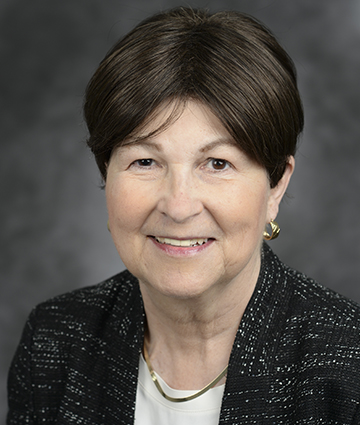
Julie A. LeFever
"Miss Bakken"
1953-2016
Julie Fowler was born and raised in Los Angeles, California. She received her undergraduate and Master’s degrees in geology from California State University, Northridge. Her Master’s Thesis “Structural Analysis of Mesozoic Deformations in the Central Slate Range, Eastern California” was under the guidance of George C. Dunne. In 1976, Julie married Richard D. LeFever. They moved to Grand Forks, North Dakota in 1980, where Julie was hired to work as a subsurface geologist for the North Dakota Geological Survey. In those early years, Julie was mentored by both State Geologist Lee C. Gerhard and Sidney B. Anderson, the head of the Survey’s subsurface program. Julie spent countless hours with Sid in the Survey log room discussing log tops, thinning and thickening formations, and changing lithologies. At first, she listened intently, soaking in his knowledge. Before long she was an active participant, expressing how she thought the log correlations should be. Julie co-authored more than a dozen articles with Sid and/or Lee during those early, formative years.
In 1989, Julie became manager of the Wilson M. Laird Core and Sample Library in addition to her subsurface geologist duties. The Survey was short on office space, so for the next 19 years, her office was in what had previously been a clean lab. During that time her desk was an ergonomically incorrect chemical bench, her walls were bookcases, and her office door was nonexistent. But as she did with so many things, Julie made the best of it.
In 1990, Julie authored her first paper on the Bakken Formation (Mississippian/Devonian). She would go on to author or co-author more than 50 Bakken papers, earning her the affectionate nickname of “Miss Bakken” among those working in the Williston Basin. In 2015, the Rocky Mountain Section of AAPG awarded the 2015 John D. Haun Landmark Publication Award to Leigh C. Price and Julie for their 1992 paper entitled: Does Bakken horizontal drilling imply a huge oil-reservoir base in fractured shales? (in J. W. Schmoker, E. B. Coalson, and C. A. Brown, eds., Geological Studies Relevant to Horizontal Drilling: Examples from Western North America: Denver, Colorado, Rocky Mountain Association of Geologists, p. 199-214).
Julie authored more than 150 papers, articles, posters, maps, etc. on the Paleozoic and Mesozoic rocks in the Williston Basin. Although she made a significant contribution to the literature on the Williston Basin and the Bakken Formation in particular, it was her readiness to share her wealth of knowledge, much of it unpublished, with others which set her apart from most researchers. Countless industry geologists, professors, and graduate students benefited from Julie’s spontaneous, one-on-one core workshops in the Wilson M. Laird Core and Sample Library.
In recognition of her valuable service, during the building dedication ceremony of the Wilson M. Laird Core and Sample Library on September 26, 2016, a core laboratory was named in her honor. During that ceremony, Julie heard from industry and academia how valuable her contribution had been to them.
Julie was thrilled when she received word from AAPG President Paul Britt on November 16, 2016 that she had been selected to receive the 2017 Robert R. Berg Outstanding Research Award. Unfortunately for all of us, Julie passed away three weeks after hearing of the award. Fittingly, at the time of her death, she was working on a Bakken paper. Julie, along with her contributions to the geologic community, will be greatly missed.
